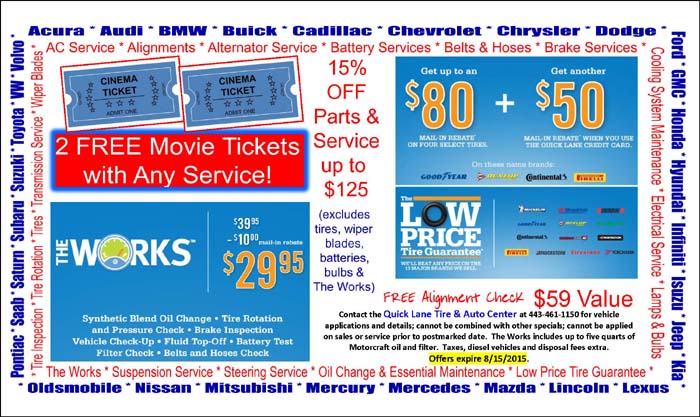Sometimes the best marketing ideas are the simplest
The title of this article pays homage to William Golding, who proclaimed “The greatest ideas are the simplest” in his classic novel, Lord of the Flies.
Golding and other famous men and women have extolled the benefits of simplicity throughout history, and one of my constant nuggets of advice when working with clients is that often, “less can mean more.”
Indeed, sometimes the best marketing ideas are the simplest.
As somebody who lives and breathes marketing every day, I see my fair share overly-complicated marketing campaigns, tools and strategies. Of course there are certainly times when sophisticated marketing techniques are necessary, but for the most part whether it’s writing a simple email or sending direct mail, simplifying can yield better results.
Study any copywriting course and you’ll no doubt encounter the suggestion to write your sales and marketing copy as if writing to a young child. This is not meant to disparage the typical adult, but instead is offered as a proven antidote for the noise in this hyped-up, over-stimulated world we live in.
Which brings me to a recent conversation I want to share with you because it illustrates perfectly that sometimes the best marketing ideas are the simplest.
In 2010, I spoke at Bill Glazer’s Outrageous Marketing Academy about the power of CopyDoodles®.

Bill literally wrote the book on outrageous advertising and if you don’t have his book in your marketing library, you should.

In the audience of 600+ business owners and marketers, sat Joe McNeil, Information Technology and Marketing Manager for Bob Davidson Ford in Baltimore, MD. I did not realize it at the time, but that day was the start of a relationship that has now lasted for almost seven years.
Joe took everything Bill and I taught him about creating unique and attention-grabbing marketing and advertising and wanted to create a marketing asset for their Quick Lane Tire & Auto Center. With 17 local competitors, Joe knew the outrageous advertising principles he just learned would be critical.
Being a fan of the retail chain Bed, Bath & Beyond and their ever-present coupons, Joe decided upon a similar strategy. Rather than go with a slick, professionally-designed look and feel, Joe designed the 11 x 6” postcards himself and used CopyDoodles on all of them.
According to Joe, “The only thing I use is CopyDoodles – I use them everywhere.”
He decided to send the postcards to two specific types of people:
- Current customers
- “Lost” customers (customers who have visited within the last 18 months, but not the past six)
Joe immediately saw what he calls positive ROMI (return on marketing investment) and within the first year, his simple little postcard generated over $200,00 in gross sales.
Joe knows to the dollar his ROMI, because he tracks results on a weekly basis. Since customers have to bring the cards in, it makes reporting simple.
Fast forward six years and Joe is still sending out two monthly mailings of his simple postcard. As a matter of fact, his boss Bruce gets upset if he doesn’t send out more than one postcard each month. Even though Joe is also the digital marketing manager, he relies extensively on direct mail to drive people into his shop.
Other than changing up some of the photographs and holiday-specific information, little has changed – except for his results.
His most recent postcard, seen below, resulted in “only” (Joe’s word) a 7.25% return on his marketing investment ($63,600 during the month). This number is calculated by taking gross profit minus marketing investment divided by marketing investment). Joe says only because he is working hard to reach a 10% ROMI.


Last year, Joe’s postcard mailings generated over $500,000 in business at a cost of only $30,000 (for printing and mailing).
In the marketing world, this is what is known as a marketing asset. It is something he can use over and over again and consistently generate profits. This success is part of the reason their Quick Lane is the second largest in the mid-Atlantic region.
I guarantee if you put Joe’s postcard in front of any advertising agency or corporate bigshot, they would thumb their nose at it and completely disregard it.
Personally, I’m even left wanting to suggest a few design tweaks to Joe, but sometimes you simply cannot dispute what works.
Direct mail expert Denny Hatch put it this way, “My first boss and mentor in the direct marketing business was Lew Smith. One of my first questions to Smith when I showed up for work was, ‘Why does direct mail look so junky?’
‘Neatness rejects involvement,’ he said. ‘If a thing is too neat and tidy, a reader will look at it and say, ‘Isn’t that nice?’ and move on. That’s why graduates of art schools make lousy direct mail designers.’
Joe McNeil’s postcards are a powerful reminder creating simple-looking advertising that leverages powerful offers can product dramatic results.
If you have your own, “less is more” example of CopyDoodles or Capuzzi-inspired marketing and advertising, drop me a note. I would love to show it off!

Great article!